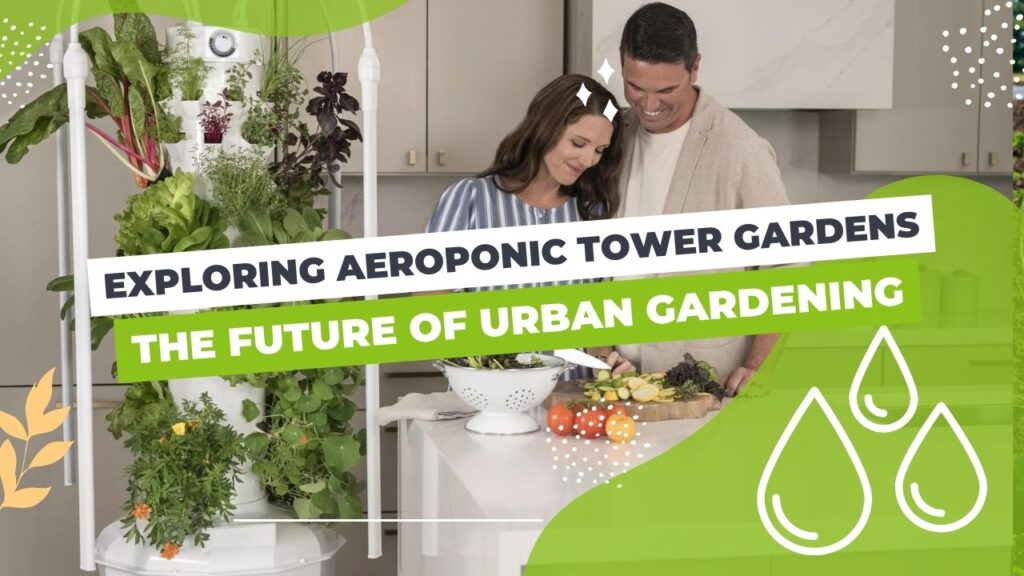Have you ever imagined harvesting crisp lettuce, juicy tomatoes, and fragrant herbs right from your balcony or kitchen without dealing with dirt and mess? That’s exactly what the Tower Garden allows you to do. This innovative system is not only redefining what it means to garden in urban spaces but also how we think about fresh produce. In this post, we’ll dive deep into how the Tower Garden works and why it might be the perfect addition to your living space.
What is Tower Garden?
Tower Garden is a vertical, aeroponic growing system that allows you to grow up to 30 plants or more in less than three square feet—indoors or outdoors. It’s designed to be simple and efficient, making it perfect for beginners and experienced gardeners alike. But what makes it truly special is its use of aeroponics, the same technology NASA uses to grow food in space.
The Science Behind Aeroponics
At the heart of the Tower Garden is its advanced aeroponic system. Unlike traditional gardening, aeroponics doesn’t require soil. Instead, plants grow in an air or mist environment with their roots exposed to air and sprayed with nutrient-rich water solution. This method provides several benefits:
- Increased Oxygen to Roots: Roots exposed to air receive more oxygen, which is crucial for growth. This leads to healthier, more robust plants.
- Efficient Nutrient Absorption: The nutrient solution is atomized into fine droplets that the roots can easily absorb. This efficiency reduces nutrient waste and accelerates plant growth, allowing for crops to mature up to three times faster than soil-based gardens.
- Water Conservation: Aeroponics uses up to 90% less water than traditional soil gardening because water in the Tower Garden is recirculated. Any water not absorbed by the plants is collected and reused, minimizing waste.
Setting Up Your Tower Garden
Setting up a Tower Garden is straightforward:
- Assembly: Start by assembling the Tower Garden unit, which includes a vertical column with planting ports, a base reservoir to store the nutrient solution, and a pump system.
- Adding Seeds: You can start your plants from seeds or seedlings. Insert them into the provided growing pots filled with a growing medium, like rockwool.
- Nutrient and Water System: Fill the reservoir with water, add the liquid nutrients, and the pump will ensure the roots receive their misting on a timed cycle.
- Light and Environment: If you’re growing indoors, you’ll need grow lights. Place your Tower Garden near a natural light source or under artificial lights for optimal growth. Outdoor setups should be in a sunny spot protected from extreme elements.
Daily and Weekly Maintenance
Maintaining a Tower Garden involves checking water levels, pH balance, and nutrient concentration:
- Water Levels: Top up the reservoir weekly, as plants absorb water and some evaporation occurs.
- pH Testing: Use a pH test kit to check the water’s pH level every few days. Adjust as necessary to maintain a pH that’s conducive to plant growth, typically between 5.5 and 6.5.
- Nutrient Balance: Refresh the nutrient solution every few weeks to ensure your plants are getting all the essential minerals they need.
Why Choose Tower Garden?
With a Tower Garden, you can grow a wide variety of fruits, vegetables, herbs, and flowers—anywhere, anytime. It’s perfect for urban dwellers with limited space, schools looking to educate children about gardening and nutrition, or anyone interested in a more sustainable way of living. Plus, watching your garden thrive in such an innovative setup is incredibly rewarding.
Conclusion
The Tower Garden is an exemplary model of how technology can transform traditional activities, like gardening, into something more suitable for modern lifestyles. Whether you’re a seasoned gardener or a curious newbie, the Tower Garden offers a clean, efficient, and enjoyable way to cultivate your own fresh produce, proving that sometimes, the best things do grow on (upright) trees—or towers, in this case!
If you’re looking to embrace a greener lifestyle with minimal fuss, the Tower Garden could be your next step towards sustainable urban living. Happy gardening!

